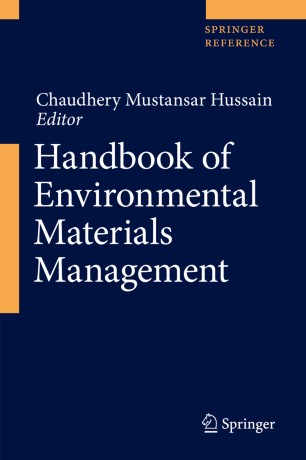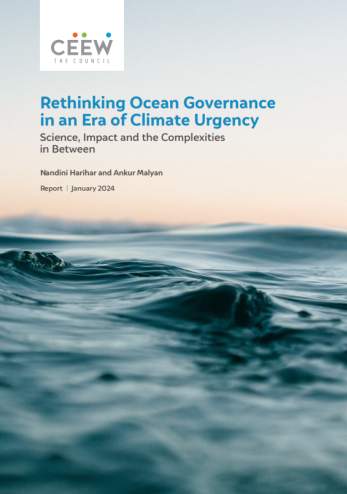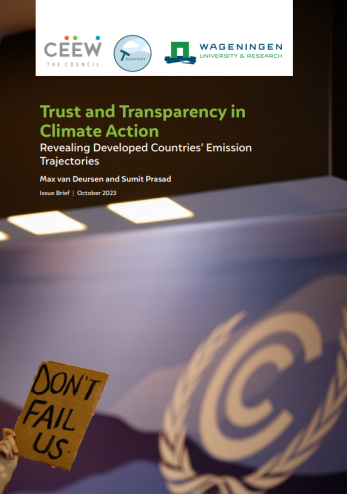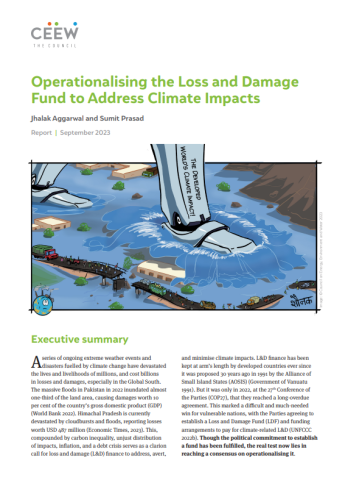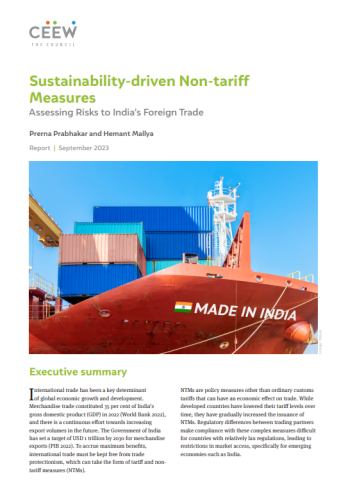Book Chapter
Performance Evaluation of Global Environmental Impact Assessment Methods Through a Comparative Analysis of Legislative and Regulatory Provisions
Lekha Sridhar and Vaibhav Gupta
May 2019 | International Cooperation
Suggested citation: Sridhar L., Gupta V. 2019. “Performance Evaluation of Global Environmental Impact Assessment Methods Through a Comparative Analysis of Legislative and Regulatory Provisions.” In: Hussain C. (eds) Handbook of Environmental Materials Management. Cham, Switzerland: Springer.
Overview
This book chapter highlights the principles of various Environment Impact Assessments (EIA) or related practices followed by eight countries - United States of America, Canada, Germany, United Kingdom, Japan, South Africa, Brazil, and India - chosen to represent different geographies and income categories. It evaluates diversified approaches followed by these countries and identifies the most valued principles considered while adopting EIA as a mainstream policy and regulatory practice.
Key Highlights
- The essential structure of an EIA remains as a DecisionMaking tool for evaluating environmental impacts.
- In most countries that have EIAs, the process followed is generally similar to the extent that there are four stages: screening, scoping, impact analysis/report preparation, and review/monitoring.
- Though EIA is intended to assist a government in decision-making regarding the potential environmental impacts of a project, in reality, that is not always the case. In many countries like India and the UK, for example, defense projects are (or can be) exempted from the EIA process.
- Most of the selected countries regulate EIA through federal or parliamentary Legislation.
- However, in cases such as India, where the underlying regulation is not a Parliamentary regulation, there is no oversight from the legislature, which makes it easy to repeal the regulation or even ease the necessary norms.
- In terms of which body has authority over the process, the environmental agency or ministries manage the process in most countries. However, in some countries like the USA and Japan, the competent authority for decision-making is the ministry/department under which the project is proposed.
- Predominantly, only projects that may have a significant impact on the environment – like infrastructure projects, mining, large industries, waste processing – are required to conduct EIAs.
- Many countries outline the stages of the scoping process with specific terms of reference, depending on the type of project. In other countries, the process can be more ad hoc.
- There are a wide variety of procedures adopted to include democratic processes in the EIA. Countries like Canada provide financial assistance to the local people to prepare and participate in public hearings. On the other hand, in Japan, even though public comments are invited at every stage of the EIA process, there is no regulatory requirement that the public comments be taken on board while arriving at a decision.
- A competent committee of experts approves or rejects a project application on the basis of the net impact of proposed developmental activity. In most cases, approval comes along with a set of strict measures for the prevention and control of pollution.
Key Recommendations
- Adopt a web-based monitoring process to minimise their efforts in the environmental review process.
- Carry out a detailed scoping exercise involving one or more techniques (checklists, matrices, consultations, or network diagrams) before framing terms of reference for the detailed EIA studies.
- Ensure regular communication with the stakeholders concerned at multiple stages, their active participation in terms of suggesting remedial measures, and taking stock of preventive measures proposed or implemented by the project authorities.
- Put in place an online tracking system with a time-bound application process to bring transparency to the entire environmental governance.
- Developed sector-specific EIA guidance manuals following an iterative process and in consultation with subject matter experts.
- Separate out the project grantee and appointed consultant through third-party intervention.
In most countries that have EIAs, the process followed is generally similar to the extent that there are four stages: screening, scoping, impact analysis/report preparation, and review/monitoring.




